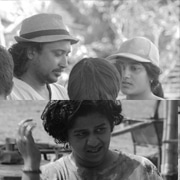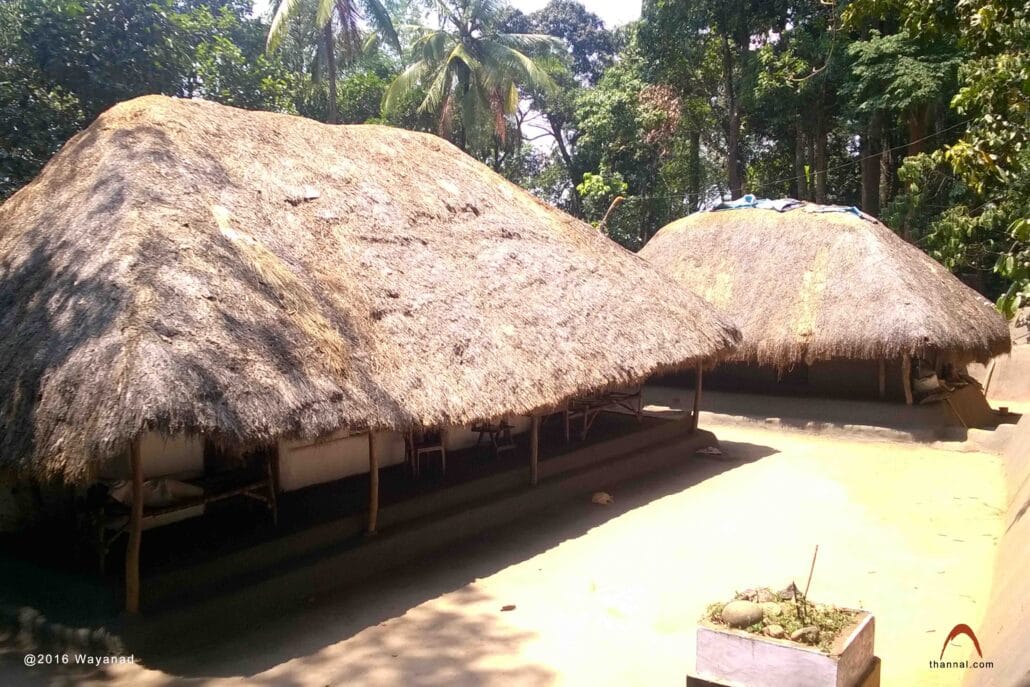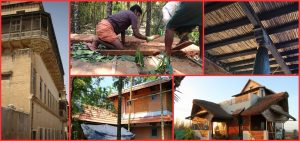Leaving behind the flat terrain of Kozhikode, there at a curve emerges the mist covered lush green forest lands of Wayanad. The mountainous terrain that looks green from afar hides within itself the ancient knowledge of our past. The ‘forest’, now represented by teak, rubber, coffee and tea plantation, reverberates to the melancholic atmosphere through a different shade of green, a hologram.
The misfortune of Wayanad started with the change in the utilisation of land. After the advent of the British, which proved lethal to the land of Wayanad, there was a change in the pattern of farming, cultivation, land use and also housing. What seemed to have taken an eternity to generate was all lost overnight, well almost.
The tribal dwellers who are the sons of the soils, yet never claimed any rights over the land, were forced out of their land and into slavery by the migratory humans who came overnight and claimed the land theirs. The Marandu (medicinal) forest land of Kurumas, Kuruchiyas, Paniyars, Adiyans, have today generously been replaced with cash crops by the migrated greed. A forest of indigenous medicinal herbs most of it still uncovered has rampantly been replaced with teak and rubber.
The farming tribes of Wayanad had once established a beautiful relationship with nature. They built with the material found in their backyard. Mud for structure, Bamboo for support, reeds for attic, and rice straw for thatch. The equation was logically direct and often followed a thorough study and observation of plants, leaves, their saps for over centuries.
Do you want to study Natural Building Online ?
Until the British made the roads, that brought along with them a vague definition of wealth. Now, reduced to being represented in mere facts and figures as the Cash cropland of Kerala by the authorities, the homes of Wayanad have been opened to tourism. We see a massive change in the trend of shelter. Yet what was lost cannot be documented with numbers/statistics.
Amidst all the chaos of homestays and touristic villas popping up to cash in on nature’s bounty, with a Wayanad on the brink of losing its aura, we come across a few gems of the mountain. People who have sustained in the changing landscape.
Three people and their Mannu Veedu (mud homes) are nothing short of a revolutionary movement in the realm of sustainable living in a crisis laden Wayanad.
At Koyileri we meet a modest organic farmer, Cheruvayal Ramaettan and his wife Geetha akka. They belong to the Kurichiya tribe one of the oldest inhabiting tribes of the region and farmers of paddy, roots, tuber along with medicinal plants. They have been instrumental in saving and nurturing more than 40 indigenous varieties of rice along with a 150-year-old mud home which speaks the story itself.
At Chekady we meet two welcoming families. Sri. C M Ramakrishnanji, who enthusiastically recalls his adobe home like it was made yesterday. A farmer at heart, he tells us a story of the making of their natural home with the soil, bamboo and thatch, all from their farm.
And his neighbour, Rajagopalan Kavikkalji, whose 300-year-old home is possibly one of the oldest cob homes in Wayanad; showcases a massive mud wall making technique, or cob, that keeps the insides warm or cool while responding to the climate.
Wayanad is a host to a beautiful earthen finish in the palette of earthen colours. Stunning rich greys, pearly whites and deep blacks. All represent the five elements of nature perfectly. You can learn more about the plasters used here in our Earthen Finishes of Wayanad.
This documentation is an effort to collect and reposit the traditional knowledge of natural buildings that showcase unique features in the heart of Wayanad.
We thank and appreciate Kanavu’s wholehearted efforts, Santhosh, Manglu & Leela’s, in aiding us with shelter & translations, and beautiful conversations about how their life began there. We are also grateful to the humble Sherlyamma, who with her husband KJ Baby, began a course of change in Wayanad with their brainchild Kanavu.

Biju Bhaskar, Musharaff Hebballi & Anushree Tendolkar
This article is by Natural builders Biju Bhaskar, Musharaff Hebballi & Anushree Tendolkar. This post is part of our Ageless village series,.














4 thoughts on “The forgotten earth homes of Wayanad, Kerala”
പ്രിയ രാകേഷ്,
തന്നാൽ രൂട്ട്സിന് ഒരു ഇമെയിൽ എഴുതുക: thannalroots<@>gmail.com
സൗഹൃദം,
തണല് ടീം
അധികം ചിലവ് ഇല്ലാതെ ഒരു മൺ വീട് വേണം എന്നാഗ്രഹിക്കുന്നു. ഒരു ഉപദേശം തരുവാൻ ഉണ്ടോ വലിയ ബഡ്ജറ്റ് അല്ല സാധാരണ വ്യക്തി മാത്രം ആണ്. മൺ വീട് നോട് ഉള്ള പ്രകൃതി യോട് പരിസ്ഥിതി യോടുള്ള താത്പര്യം ആണ്
രാകേഷ്
9496670366
Excellent post want to go there..n learn what i read here….
A “vague definition of wealth”; so true, and a story that is repeated the world over.